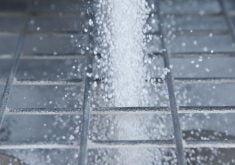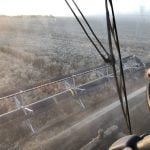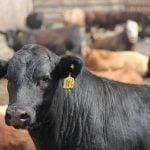Last winter, I wrote about how to set up a field trial to receive useful data when assessing a new practice on your farm (Field trial testing tells tales for on-farm agronomy, Jan. 9, 2014.)
Hopefully many of you were able to set up trials on your farm that will answer a question about the usefulness of a practice. Now is the time to gather the data from the trials.
First, let’s look at what is often described as a planning cycle. My planning cycle has five components.
Read Also

Environmental farm group has Ottawa’s attention
In 2021, Farmers for Climate Solutions published a report on how Canada should reduce emissions from agriculture. Not long after, the federal government implemented most of the recommendations in the report.
First, we create a plan, which means having a simple question for which you want an answer, such as:
- Does the macro-micro nutrient product I am applying with my herbicide pay?
- Does the fungicide I am spraying give me an economic benefit?
Planning also includes what field you are using for the trial and how the trial is going to be set up.
The second part of the planning cycle is implementation. This is doing what your plan had set out. Good notes should accompany the implementation and any divergence from the plan must be noted.
The third part of the cycle is review, which includes observations you may have made of the treatments of the trial during the growing season.
The collection of data is the fourth part of the planning cycle, the one that we are now entering. At this time of year, you will be harvesting the treatments. The way you are going to measure the differences in the trials should have been discussed in the planning phase.
The final part of the planning cycle is the analysis of the data and the answering of the question that was set out in the plan.
The gathering of the data can be done with various methods. Representative areas from each treatment can be harvested and weighed using a calibrated weigh wagon. This method can be effective but it does have a number of short comings. These include the time it takes during the busy harvest season to carry out the extra work.
It also opens up a source of bias because you or possibly a chemical representative you are working with will select the areas to harvest. This may prejudice the results purposely or subliminally and may not give a true picture of the real results.
On an even smaller scale, square metre samples can be taken and harvested. A large number of samples must be taken from all treatments and the bias factor will be even larger.
A second method of collecting data is to use the yield monitor and mapping function on your combine. This is a simple way of collecting data because there are no time restrictions or waiting for equipment.
It also removes most of the bias from harvest data. The monitor should be calibrated for the crop being harvested and the same combine and operator should be used for the different treatments.
Once collected, the analysis of the data can begin. There are various software programs available. Some require extensive data input just to get started, while others have a less onerous threshold. We, Farmer’s Edge, have added our own, Advanced Geospatial Yield Analysis, to the market. It only requires the input of yield data to start analyzing the return on investment from each input treatment.
Tools like these make the planning phase much easier, especially if you are working with multiple inputs and many fields.















